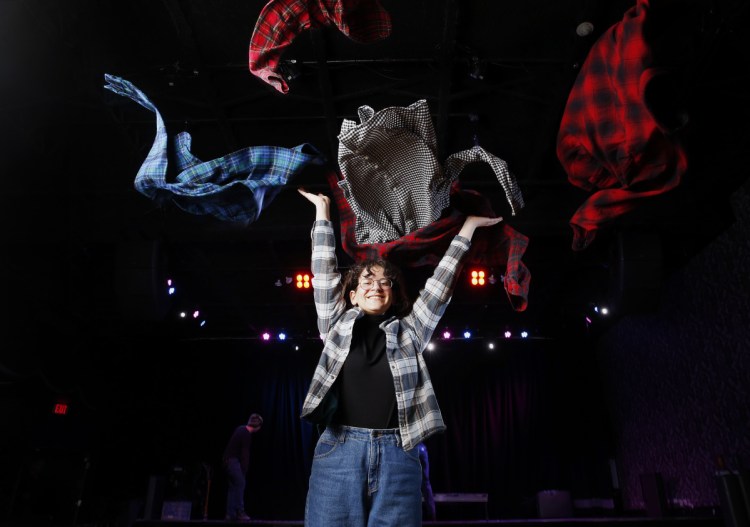Flannel is hot.
That’s a reassuring thought as Maine slips inexorably into winter. But flannel is hot in a way that transcends the warmth of the soft, cozy cotton, wool or sometimes synthetic fabric.
“It’s really a fashion statement,” said Christina Binkley, the Wall Street Journal’s fashion and style columnist and author.
And that fashion statement is also increasingly important to L.L. Bean.
The Freeport retailer said it is weathering a difficult year with the help of flannel and other cold-weather outerwear. This year, the company changed its famous return policy, laid off workers and didn’t hand out annual bonuses, although increasing sales later in the year did lead the company to announce holiday bonuses.
Flannel figured prominently in the uptick of sales in October, brightening the mood of the company’s workers. Executives hope that will continue into the holiday season, when Bean, like most retailers, makes the bulk of its money.
Spokeswoman Carolyn Beem said the popularity of the comfy fabric is pushing Bean to diversify its flannel offerings beyond the shirt pulled out of the closet on the way out to the yard to rake leaves.
She said Bean flannel comes in a variety of blends, weights and styles and Bean is using it to make new products, such as tunics for women and hoodies for both men and women. Those are augmented with “bring-backs from the archives,” Beem said, meaning a wide array of shirt styles in a rainbow of tartan patterns. That last category includes the officially registered Bean of Freeport Hunting tartan, which relies heavily on a color designated Bean Green.
Beem said Bean also has a new flannel blend in some of its products, called Rangeley flannel. It’s a more sustainable version of the material, she said, using Tencel – which is derived from wood fibers – and organic cotton.
And for Bean, flannel is for more than just wearing. The company sells flannel sheet sets and Beem notes that product is a favorite of Wirecutter, a New York Times-owned site that recommends consumer products. The site said Bean’s flannel sheets earned its top rating, lauded for being plush but not clingy. As an aside, Wirecutter apparently has a thing for Bean sheets – it also rated Bean’s cotton percale sheets tops, citing the cool, crisp feel – pretty much the polar opposite of what people look for in flannel sheets.
Beem also said that for Bean, there are a lot of uses for flannel, including robes and pajamas.
“Proving you can pretty much live in flannel,” Beem said. “Flannel is not just a warmth story, but a comfort story.”
The company has seen double-digit increases in sales of flannel goods in the past year, Beem said, with sales of flannel items in scotch plaid designs particularly strong.
Like Bean, Bass Pro Shops declined to provide specific sales figures, but a spokesman said it, too, is seeing strong flannel sales. Bass Pro Shops owns Cabela’s, a chain that sells hunting, fishing and outdoors goods and is considered a prime competitor of Bean’s.
“The flannel product line continues to climb and business is very brisk in that category,” the spokesman said. In fact, the company now holds a “Flannel Fest” in October devoted to products made from the fabric
Binkley said flannel’s story is a fashion story. Flannel was a key fabric in the grunge movement in the ’90s, popularized by Seattle-based bands such as Nirvana.
“This whole concept of grunge dressing was sort of mixing working clothes with things that were the opposite, like a flannel shirt over a silk nightgown.” she said. “It seemed kind of racy and crazy back then.”
But grunge fashion and the ’90s, she said, are back. Millennials, she said, like the idea of mixing a flannel shirt, worn open, over a T-shirt, usually one that carries a political or cultural slogan.
“My kids think flannel shirts are so cool,” said Binkley, who lives in Los Angeles. “L.L. Bean is smart to take advantage.”
Unfortunately for Bean, however, younger flannelistas might seek out their flannel fix at a thrift shop. Younger consumers, Binkley said, seem to recognize the value in clothing made well before they were born, sensing that the quality exceeds what’s available today.
Jennifer Rockwell, the owner of Material Objects in Portland, said flannel has long been prized by the clientele of her vintage clothing store.
“Flannel and Pendleton are perpetually hot,” she said. Pendleton is an Oregon-based company that has turned out wool and flannel clothes for more than 150 years. “It goes out about as fast as it comes in.” Rockwell said the flannel-based outfit is well known and there’s a certain formula to it.
“It’s worn over a T-shirt, maybe a vintage T-shirt as well, and on top of your skinny jeans,” she said. “It’s kind of a bread-and-butter kind of thing.”
Binkley said Bean is well positioned to take advantage of flannel’s surge.
Like vintage clothing, Bean has a deep heritage to draw on, she said.
“It has this image of a solid, honest ethos and that does fit into this movement – they make good products at good prices,” she said. “And it’s about the symbol of flannel, not the price tag. I think it’s a trend that will last and won’t look silly in a couple of years.”
Send questions/comments to the editors.



